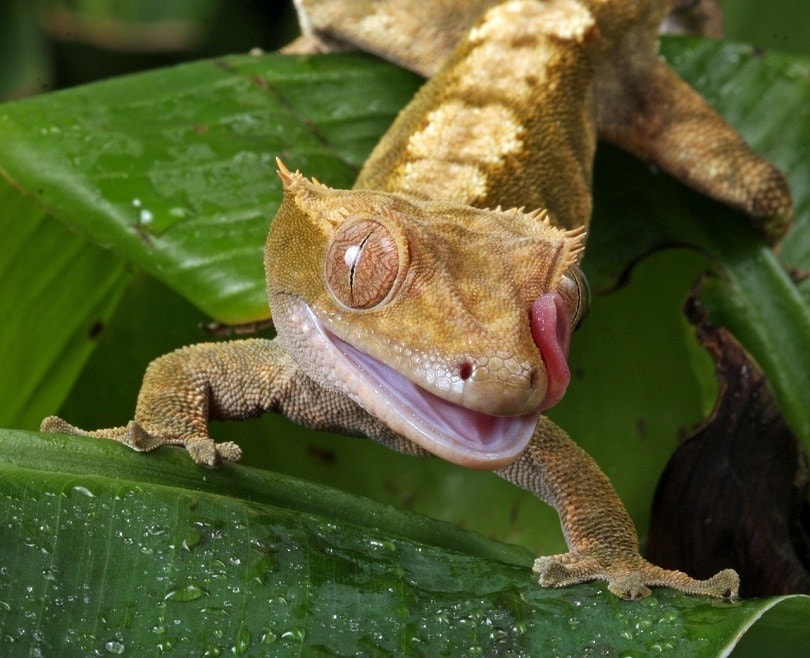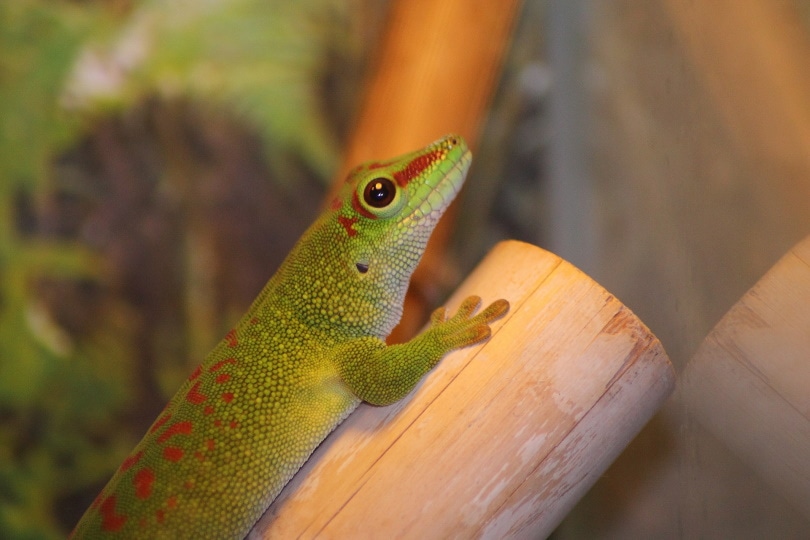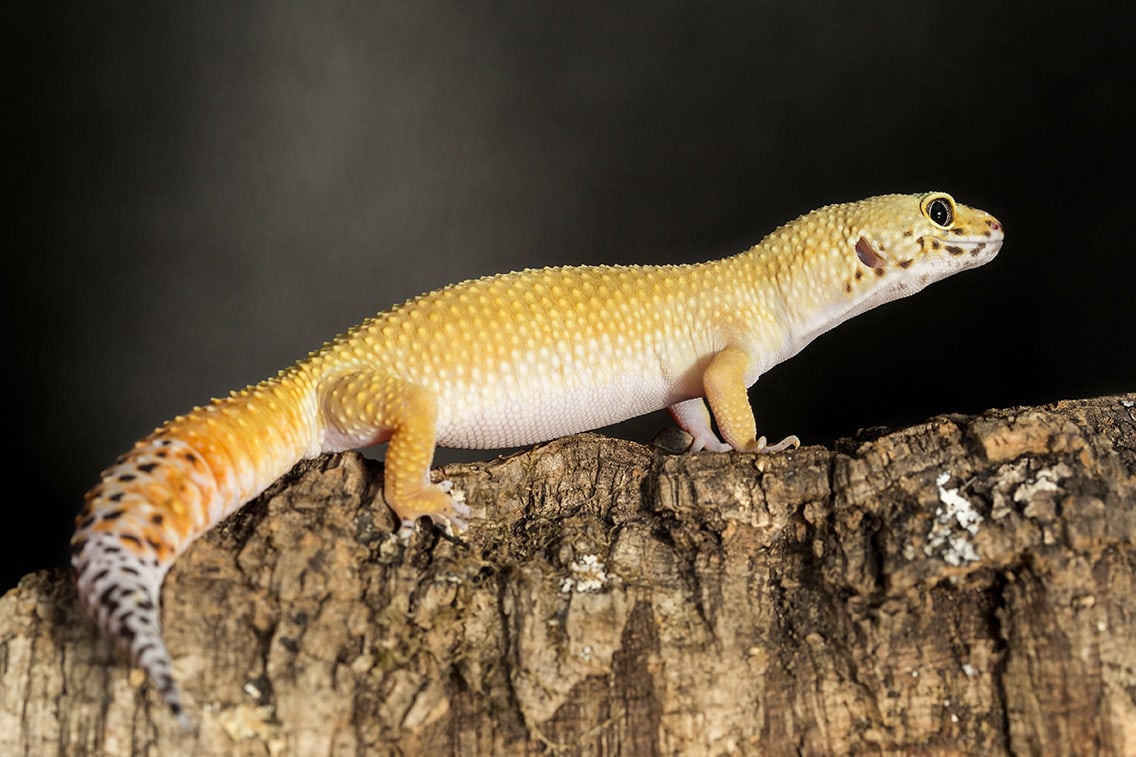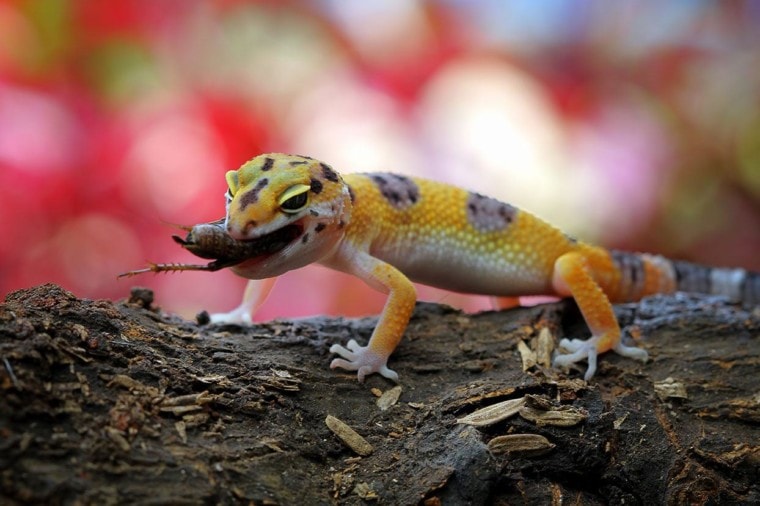
If you have recently purchased your first leopard gecko, one of the first questions many people have is what to feed them. While many reptiles will eat several types of food, including insects, commercial food, fruits, and vegetables, the leopard gecko is only likely to consume insects. If you are looking to provide your pet with the best diet possible while we look at the different types of insects the leopard gecko can eat. We’ll also discuss what types are better than others and why, so keep reading while we discuss diet and feeding tips for the leopard gecko.
Top 4 Feeder Insects for Leopard Geckos
Insect distributors breed your pet food in captivity and provide the best nutrition for your pet.
1. Mealworms
Mealworms are the most popular insect to feed your leopard gecko. They are easy to find in most pet stores and are relatively inexpensive. They keep for a long time, and you can even breed them if you want a lower-cost method of feeding your pet. Your leopard gecko will love them, and though they have a slightly high-fat content and poor calcium to phosphorus ratio, you should not experience any problems making them a staple food in your pet’s diet.
The downside of mealworms is that they don’t move much. It’s too easy for the leopard gecko to catch them, so don’t provide much of a hunt. The hard outer shell can occasionally cause digestive problems, and they like to burrow, so it can be hard to retrieve them at mealtime.
2. Crickets

Crickets are another fantastic food to feed your leopard gecko, and many people will prefer them because they have a higher nutritional value. Crickets also jump, which triggers your pet’s instinct to hunt, which can help them feel more at home while making your pet more active to combat obesity. It’s also low in fat, highly digestible, and provides your pet with plenty of protein. Like mealworms, they are relatively easy to purchase or breed, and you can maintain a low-cost food indefinitely if you have space.
While you probably never realized it before unless you’ve owned lizards in the past, crickets stink. Keeping even a few of them in a cage will fill the room with an unmistakable odor. The constant jumping and chirping can create quite a bit of noise, and they often find a way to break free, especially when you are collecting them for your leopard gecko.
3. Dubia Roaches
You can purchase several types of roaches for your leopard gecko, like the Turkestan cockroach, but the Dubia is by far the most popular. This roach cannot climb, so you won’t need to worry about them escaping. They don’t make any noise and are relatively easy to breed if you can create a warm and dark environment. They have a high nutritional value and are easy to collect at feeding time, and since they move faster than mealworms, they trigger the hunting instinct.
While there are several advantages to Dubia roaches, they are much more expensive than the options we have looked at so far. Some people might have difficulty creating a suitable environment for breeding, so you might need to repurchase them several times, and they are not as readily available as mealworms or crickets.
4. Waxworms

Waxworms are one of your leopard gecko’s favorite foods, and it will go to great lengths to get it, ignoring other foods in its path. Waxworms are nutritious, but they also contain a lot of fat and can put weight on your pet. Most experts recommend providing them as an occasional treat to prevent obesity and the health problems that come with it. Some owners also use them as a bribe to get stubborn geckos to eat again. While it’s not difficult to breed waxworms, it’s usually better to purchase a few at a time since they are not suited to daily feeding.
Other Feeder Insects
There are other feeder insects available, but they are much harder to find and often quite costly. Hornworms, silkworms, super worms, and butterworms are all good for your leopard gecko to eat on occasion, and we recommend using them to offer your pet a varied diet if you see them for sale. Many of these insects contain too much fat to feed daily, but the Black Soldier Fly Larvae is one of the most popular exotic food because it has the correct calcium to phosphorus ratio, and you can often find it for sale online.
Yard Bugs
Though it may be tempting to catch crickets, grasshoppers, flies, and other insects in the yard around your home, doing so can be dangerous. Wild bugs often contain parasites that can be harmful to your pet’s health, so it’s best to avoid feeding them to your pet. However, if you are in a pinch, make sure you don’t collect the bugs from an area where there are pesticides, like most gardens, and only feed one or two at a time to make sure your pet doesn’t have an adverse reaction from parasites.
Note: Avoid spiders when feeding yard bugs because they can deliver a painful and even poisonous bite that can cause your pet serious health problems. Caterpillars are another bug to avoid because they often contain toxic chemicals.
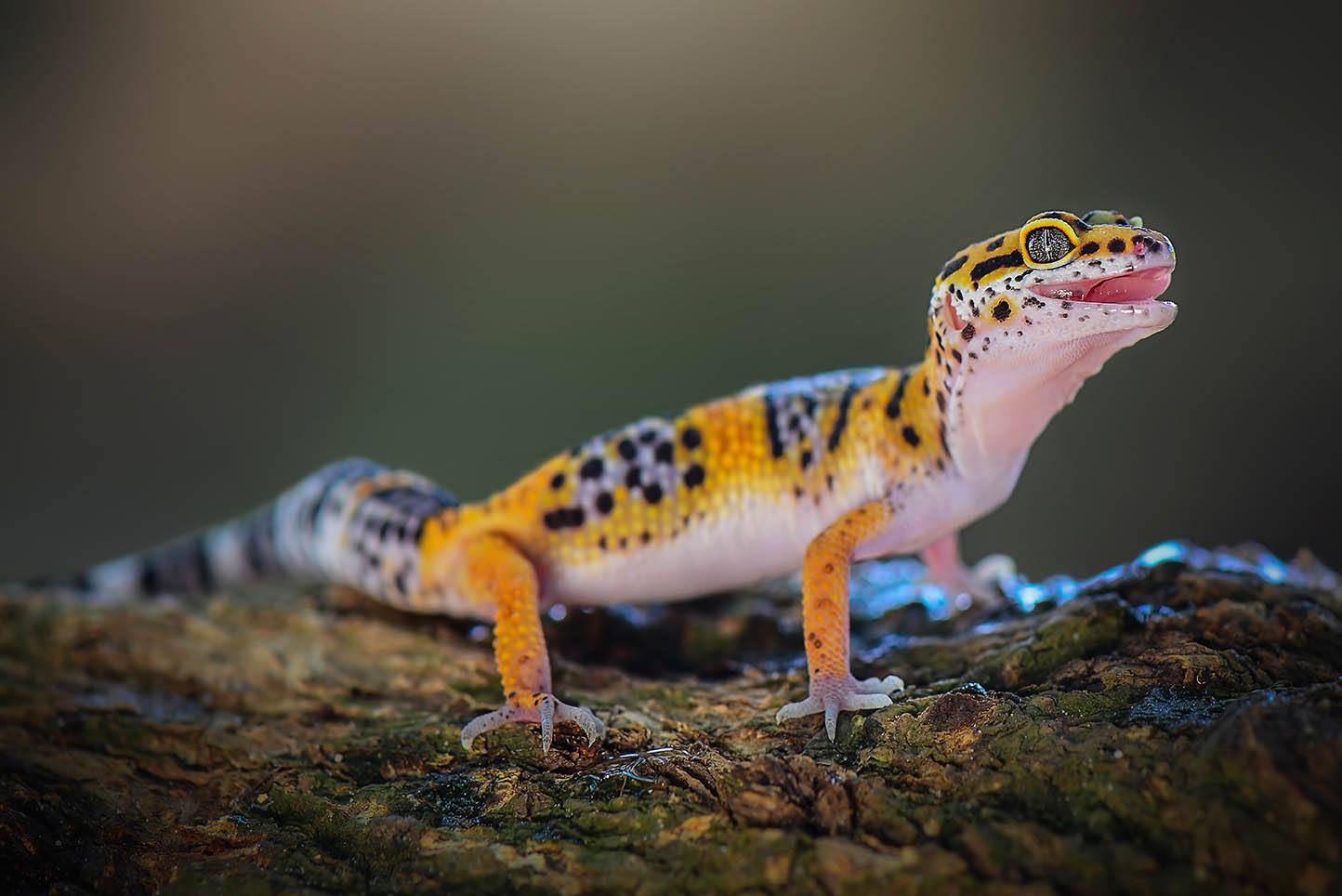
Should I feed my leopard gecko commercial reptile food?
Unfortunately, your leopard gecko is unlikely to show any interest in eating commercial reptile food as they only eat live insects. Of course, there are exceptions to the rule, and if you find one that likes it, it’s safe for your gecko to eat.
Should my gecko eat fruits and vegetables?
There are always exceptions to the rule, and some leopard geckos might enjoy an occasional piece of fruit, but most will ignore it and not recognize it as food. The best thing to do with fruits and vegetables is to use them to gut load your insects to provide a more nutritious meal for your pet.
How do I feed insects to my leopard gecko?
Gut Loading
Before you can feed the insects to your pet, you should gut load them. Gut loading is the process of providing the insects a healthy diet to reach their maximum nutritional value. It also helps to hydrate them, so they are more filling. If you purchase your insects online, they are often distressed and dehydrated by the time they reach your home, so most experts recommend gut loading with fruit and vegetables for at least 24 hours before feeding.
Calcium Dusting
You will also need to coat the insects with calcium dusting a few minutes before feeding. Calcium is an essential nutrient that your pet cannot get enough of without supplementation. Too little calcium can result in metabolic bone disease, which is life-threatening and challenging to reverse. It can leave your pet with soft and broken bones, reducing its ability to move.
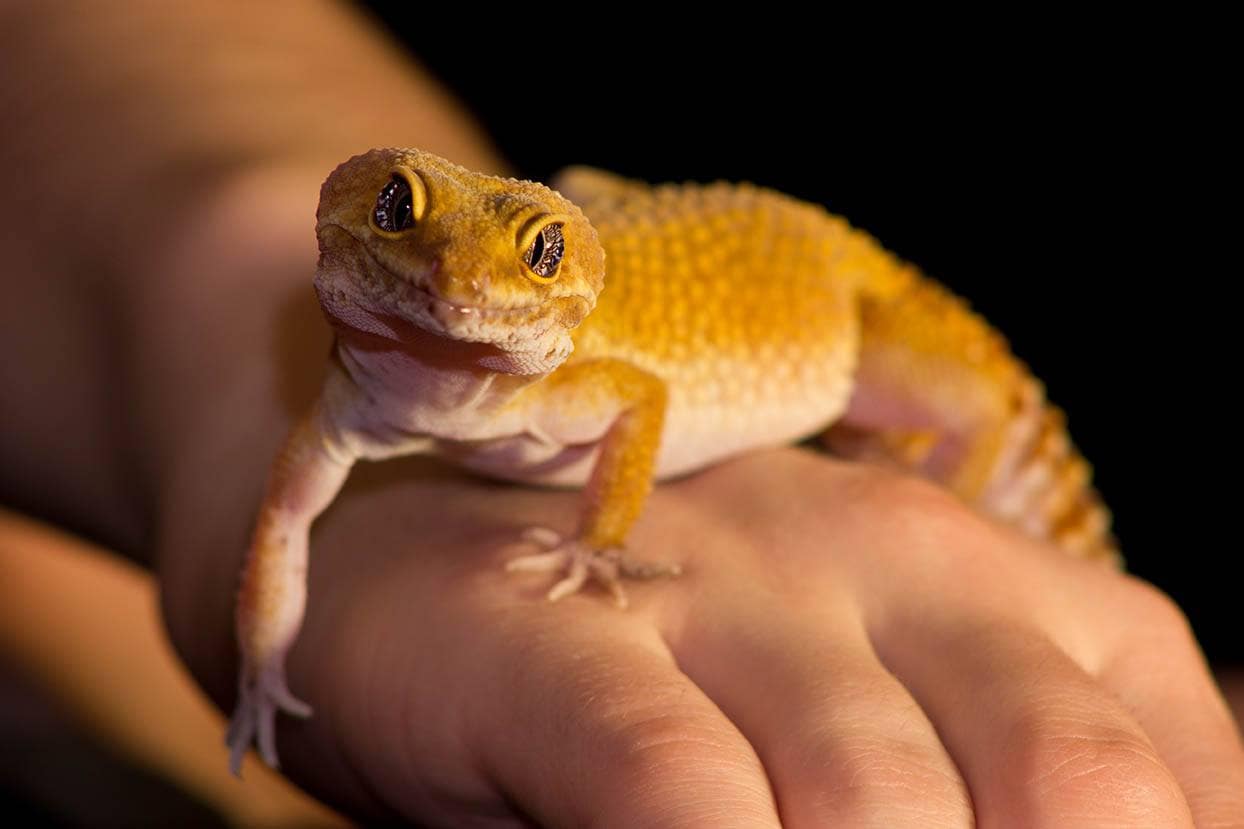
To dust your feeder insects, you will need to purchase a commercial calcium powder, often also containing vitamin D3, and place it on the insects before each feeding. Most Leopard geckos will eat about two crickets per inch of body size.
Final Thoughts
We recommend mealworms for most people because they are quiet, long-lasting, and nutritious. We’ve had no problems feeding them to several of our pets, and they have all lived long lives. If you have an outdoor shed or somewhere out of the way to store your insects, crickets are also a great choice. However, because of the noise and smell, we recommend new owners start with mealworms. It’s also important to pick up waxworms to give your pet an occasional treat, and some of the other insects mentioned can help provide some variety.
We hope you have enjoyed reading over this guide, and it helped you decide what you will feed your pet!
RELATED READ:
- Leopard Gecko Humidity & Temperatures: The Optimal Levels
- 5 Best Leopard Gecko Substrates — Reviews & Top Picks
Featured Image: Kuri afshen, Shutterstock



